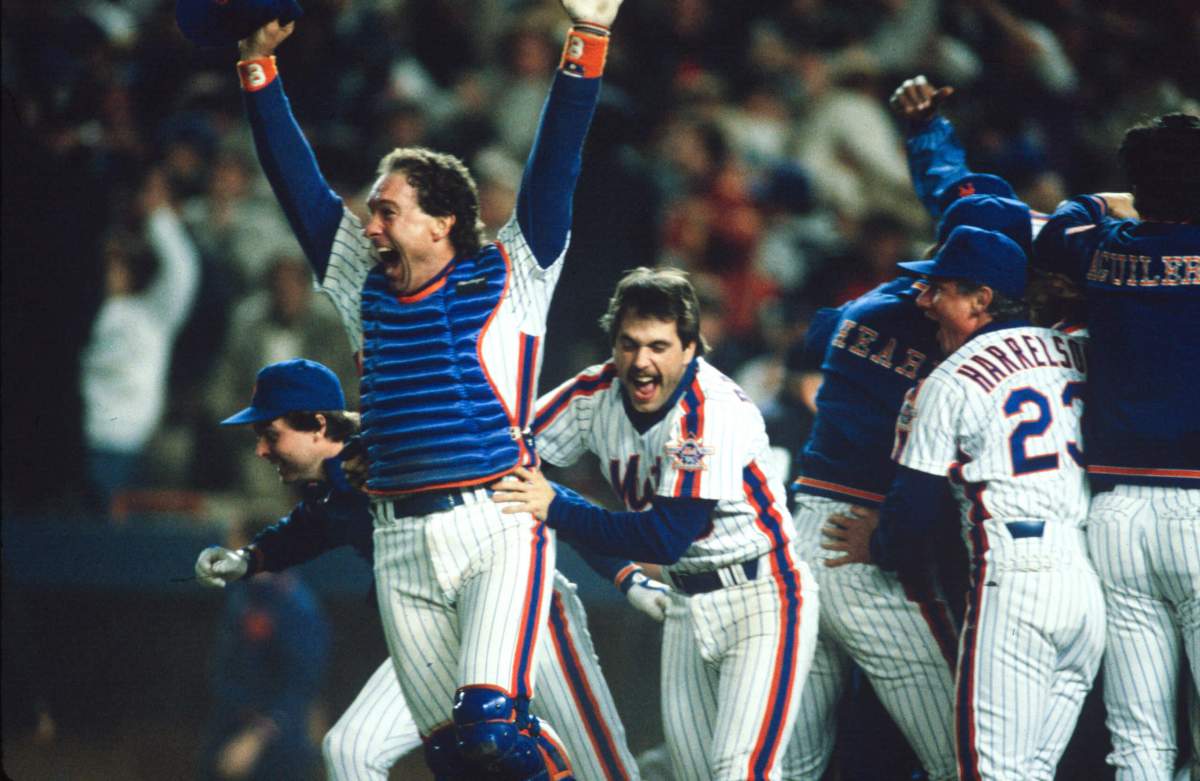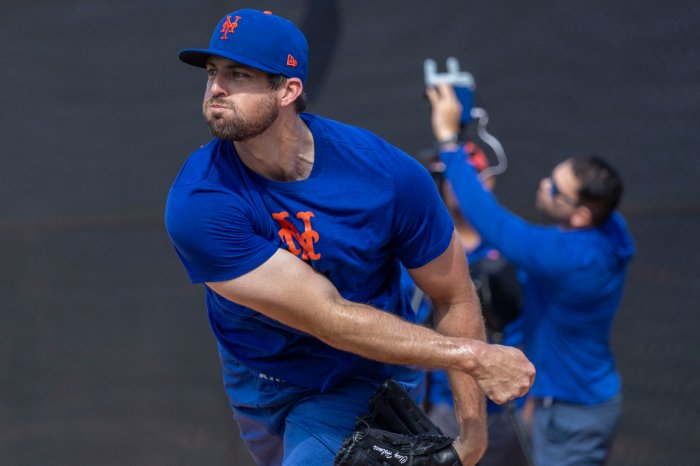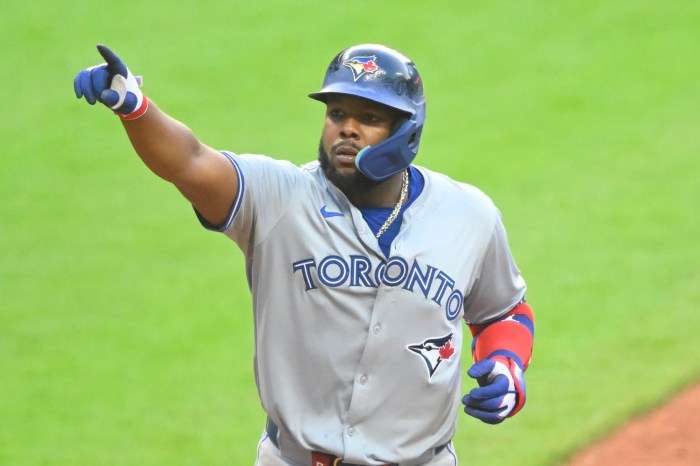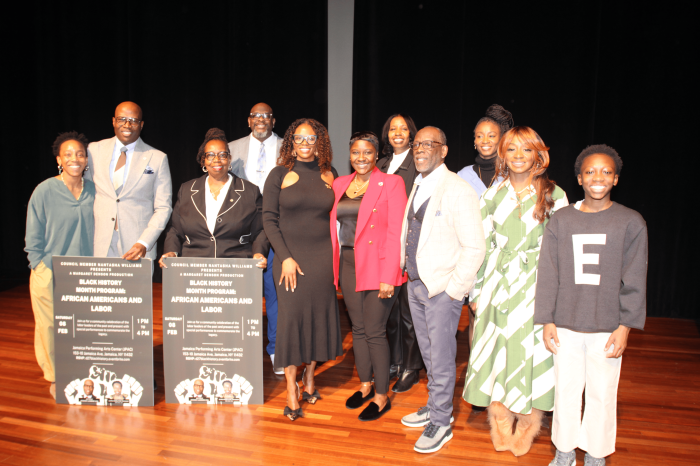Maybe the worm started turning in Flushing the moment then-Mets co-owner Fred Wilpon spoke at the trophy presentation for the 1986 Mets’ World Series triumph.
In that jubilant, champagne-soaked Shea Stadium locker room, Wilpon celebrated the franchise’s historic achievement, but made a point of congratulating the hard-luck losers, the Boston Red Sox. He said they had “nothing to be ashamed of,” adding, “They played great baseball — great character on both sides.”
Wilpon’s magnanimous statement seems innocent enough, but in 35 years of hindsight about that championship team — brought to mind in ESPN’s terrific 30 for 30 documentary, “Once Upon a Time in Queens — it seemed to mark the start of a prolonged downturn for the franchise.
As the documentary showed, it seemed that the front office — namely the architect of the 1986 Mets, general manager Frank Cashen — grew tired of the players’ antics.
In their eyes, the Mets’ character wasn’t what they had wanted.
Glorious as the 1986 campaign was, there were plenty of darker moments along the way — four on-field brawls during the regular season; four Mets players getting arrested in a Houston bar fight; the notoriously wild, destructive plane ride back home to New York after the Mets won the National League pennant over the Astros.
Then there were the simmering problems with stars Darryl Strawberry and Dwight Gooden that only surfaced in the months after the 1986 season. Both were afflicted with drug abuse problems, and Strawberry’s abuse of his wife also came to the fore.
After that triumph, it seemed that the front office wanted to run away from the worst sides of the 1986 Mets, which is completely understandable. Many of the off-field incidents that occurred were intolerable.
But in distancing itself from the worst qualities, the front office managed to also rip out the team’s best aspects. There had to be a better way, but Cashen couldn’t find it.
Not long after Jesse Orosco hurled his glove into the air after getting the final out in Game 7 of the 1986 World Series — as Mets fans dreamed of a potential dynasty rivaling the Yankees in the 1950s, and the Oakland Athletics and Cincinnati Reds in the 1970s — the dismantling began.
Ray Knight walked away — rebuffed by a half-hearted, one-year contract offer from Cashen made only hours after being named World Series MVP. He got into two major fistfights on the diamond during the 1986 campaign but was considered one of the team’s veteran leaders.
Kevin Mitchell, the promising young utility player with a curious history and personality, was dealt to the San Diego Padres for mild-mannered outfielder Kevin McReynolds. While McReynolds developed into a nice, complementary player for the Mets, Mitchell became a star; he smashed 49 home runs in 1989 for the San Francisco Giants, winning the MVP award and helping the team reach the World Series.
These changes alone marked a paradigm shift for the Mets, who just weren’t in the same form in 1987. And in the years that followed, as the dynasty fans had hoped for never materialized, Cashen either traded away or let walk away the core pieces of that rough-and-rowdy, yet wildly successful 1986 team.
For the last 35 years, the Mets have had blips of glory — the remarkable run of the Mike Piazza era in 1999 and 2000; the 2006 runaway team; the 2015 juggernaut. But the blips never equaled the glory of 1986 — they came up short in 1999 and 2000; got bounced from the playoffs by a mediocre St. Louis Cardinals team in 2006; and couldn’t get past the free-swinging Kansas City Royals in 2015.
And those blips have been engulfed by years and years of generally frustrating, profanity-inducing bad baseball that have left Mets fans completely apoplectic.
Back to the future
Wilpon and Cashen are no longer part of the equation, but the stench of their post-1986 failures haunts the Mets franchise to this day.
What started as a promising 2021 season has completely slipped away. These Mets had been in first place for three months, but couldn’t put together the momentum needed to hold the lead. Injuries, bad management, and woeful hitting took their toll, and they fell apart.
Five games behind the first-place Atlanta Braves with 15 games left to play, no miracle seems imminent.
Owner Steve Cohen and team president Sandy Alderson pledged last November to change the culture of the franchise from the top down. Cohen set a goal of winning a World Championship within the next three to five years. The team’s 2021 performance suggests there’s a long way to go before that goal is achieved, though the pieces are in place to build something special here.
Where should Cohen and Alderson go from here? Simple.
Look back at the 1986 Mets and rebuild the Mets into a franchise that channels their forerunner’s best traits — competence, resilience, drive, personality, and the ability to perform in the clutch.
They have leaders in Francisco Lindor, Pete Alonso, Brandon Nimmo, and Javier Baez, thumbs-down scandal be damned. Build the team around them with great fielders and hitters who can work the count, get on base and drive in runs — players in the fashion of Lenny Dykstra, Mookie Wilson, and Wally Backman.
Get a crafty, players’ manager comparable to Davey Johnson — one who can balance statistics and gut instinct, who lets their players have fun, who can instill swagger, but who also isn’t afraid to make the tough decisions to bring out the best in their team.
Jacob deGrom and Marcus Stroman are the team’s top starters. Bring back Noah Syndergaard on a qualifying offer. Find a left-handed starter like Bobby Ojeda who has the resiliency to beat a team even when he doesn’t have his best stuff.
And in the bullpen, let’s stop putting the onus of closing a game on one pitcher. Edwin Diaz needs a left-handed complement in the same manner that Roger McDowell had Jesse Orosco in 1986.
Mets fans have been waiting too long to win. Cohen and Alderson owe it to them to turn this franchise into a consistent contender for world championships, as they promised at the start of their reign. The biggest step they can take in that effort is channeling the spirit of 1986 into the Mets going forward.
Editor’s note: The author is a long-time member of the long-frustrated Mets fanbase.
Read more: Top Runner Set for NYC Marathon





































